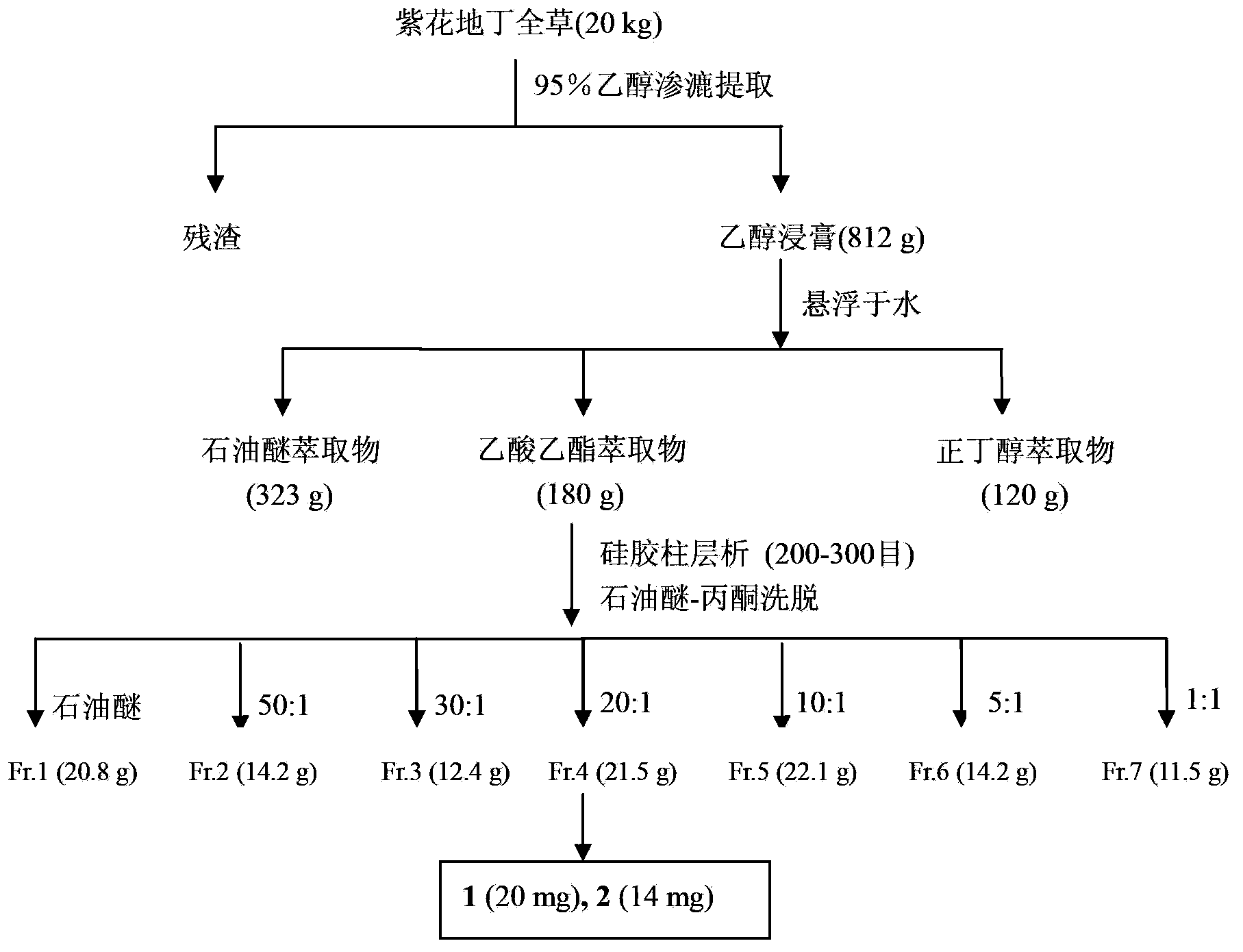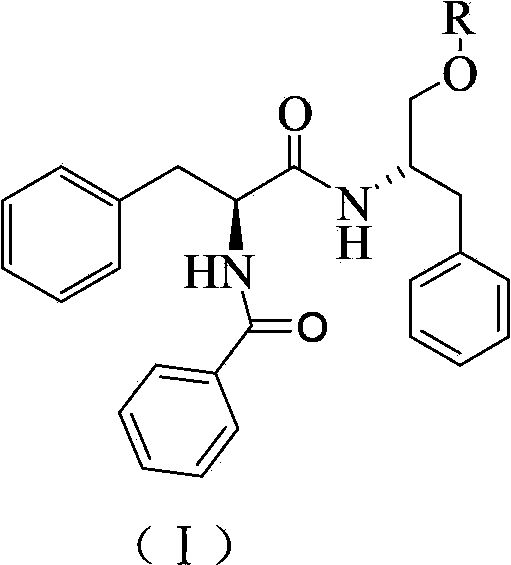Dipeptide compound and use of the same in preparation of anti-complement drugs
A compound and anti-complement technology, applied in drug combination, antipyretics, anti-inflammatory agents, etc., can solve problems such as compounds that have not yet seen complement inhibition
- Summary
- Abstract
- Description
- Claims
- Application Information
AI Technical Summary
Problems solved by technology
Method used
Image
Examples
Embodiment 1
[0020] Embodiment 1. Preparation of dipeptide compounds
[0021] Take 20kg of dried Viola chinensis, crush it, soak it in 95% ethanol at room temperature (50L×5 times), combine the extracts and concentrate until there is no alcohol smell, add water to dilute the extract to 2.5L, and then add an equal volume of petroleum ether (60-90°C), ethyl acetate, n-butanol extraction (each 2.5 L x 3 times), combined ethyl acetate extracts and concentrated to dryness to obtain 180 g of ethyl acetate extract. The ethyl acetate extraction part was separated by silica gel (200-300 mesh) column chromatography, followed by petroleum ether-acetone (petroleum ether, 50:1, 30:1, 20:1, 10:1, 5:1, 1:1 ) gradient elution to obtain 7 fractions (Fr1-7), of which fraction Fr.4 (21.5g) was subjected to silica gel column chromatography (petroleum ether-ethyl acetate as eluent, 30:1, 20:1 , 15:1, 10:1, 5:1) and Sephadex LH-20 (chloroform-methanol, 1:1) were repeatedly purified, and two compounds were isol...
Embodiment 2
[0024] Example 2. Anti-complement classical pathway test in vitro
[0025] Take 0.1ml of complement (guinea pig serum), add barbiturate buffer solution (BBS) to prepare a 1:5 solution, and double-dilute with BBS to 1:10, 1:20, 1:40, 1:80, 1: 160, 1:320 and 1:640 solutions. Take 1:1000 hemolysin, 0.1ml of each concentration of complement and 2% sheep red blood cells (SRBC) and dissolve them in 0.3ml of BBS, mix well, put them in a low-temperature high-speed centrifuge at 5000rpm, 4°C after 30min in 37°C water bath Centrifuge for 10 min under conditions. Take 0.2ml of the supernatant from each tube and place it in a 96-well plate, and measure its absorbance at 405nm. A full hemolysis group (0.1ml 2% SRBC dissolved in 0.5ml triple distilled water) was also set up in the experiment. The absorbance of three-distilled water lysed blood vessels was used as the standard of total hemolysis, and the hemolysis rate was calculated. Taking the dilution of complement as the X-axis, the ...
Embodiment 3
[0026] Example 3. Anti-complement alternative pathway test in vitro
[0027] Take 0.2ml of complement (human serum), add AP to dilute (barbital buffer, pH=7.4, containing 5mM Mg 2+ , 8mM EGTA) solution was prepared into a 1:5 solution, and double-diluted into 1:10, 1:20, 1:40, 1:80, 1:160, 1:320 and 1:640 solutions. Take 0.15ml of complement of each concentration, 0.15ml of AP diluent and 0.20ml of 0.5% rabbit erythrocytes (RE), mix well, put in a low-temperature high-speed centrifuge after 30 minutes in a 37°C water bath, and centrifuge at 5000rpm and 4°C for 10 minutes. Take 0.2ml of the supernatant from each tube and place it in a 96-well plate, and measure the absorbance at 405nm. A full hemolysis group (0.20ml 0.5% RE dissolved in 0.3ml triple distilled water) was also set up in the experiment. The absorbance of three-distilled water lysed blood vessels was used as the standard of total hemolysis, and the hemolysis rate was calculated. Taking the dilution of complement...
PUM
 Login to View More
Login to View More Abstract
Description
Claims
Application Information
 Login to View More
Login to View More - R&D
- Intellectual Property
- Life Sciences
- Materials
- Tech Scout
- Unparalleled Data Quality
- Higher Quality Content
- 60% Fewer Hallucinations
Browse by: Latest US Patents, China's latest patents, Technical Efficacy Thesaurus, Application Domain, Technology Topic, Popular Technical Reports.
© 2025 PatSnap. All rights reserved.Legal|Privacy policy|Modern Slavery Act Transparency Statement|Sitemap|About US| Contact US: help@patsnap.com



